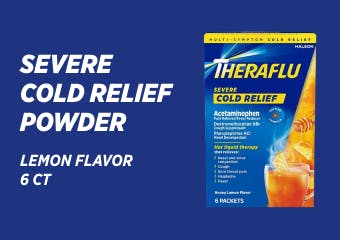What Are Sinuses?
The sinuses are a system of hollow cavities in the skull. The sinuses include maxillary sinuses (in your cheekbones), frontal sinuses (near the center of your forehead), ethmoid sinuses (behind your eyes), and sphenoid sinuses (the sphenoid bone behind your nose).i The sinuses are a part of your respiratory system and connect to your nasal passages.
Why Do We Have Sinuses?
There are a few reasons we have sinuses. Sinuses are lined with mucus, so they help keep our noses moist.ii Other functions of the sinuses include:
- Enhancing the voice
- Protecting the face from trauma
- Insulating the nose against temperature changes
- Filtering out the dust and microorganisms from the airiii
The sinuses are an important component of our respiratory health. However, they are easily impacted by our environment, leading to symptoms like runny nose, congestion, and headaches. Below, you’ll find information on common sinus problems and how to identify the signs.
Sinus Problems Explained
Sinuses are a system of hollow activities found near your eyes, cheekbones, and forehead. Occasionally, the sinuses become inflamed. The inflammation of your sinuses is referred to as “sinusitis.” iv Why do sinuses become inflamed? Earlier, we talked about how sinuses help filter the air we breathe. If the air contains viruses, bacteria, allergens, or other microorganisms, the sinuses can become irritated.v Here are some reasons your sinuses might become inflamed and cause problems:
- Allergies
Seasonal allergies, also known as hay fever, are a common source of sinus issues. Allergies can be caused by allergens like dust, animal dander, and pollen. If you have allergies, you may notice nasal congestion or a post nasal drip. vi Allergies can be temporary or chronic, and severity varies from person to person.
- Viral Sinusitis
As you can probably gather by the name, viral sinusitis is caused by viruses we come in contact with, such as the cold or flu. Cold and flu viruses can trigger runny nose, sore throat pain, sneezing, nasal congestion, and coughing.vii When you have the flu or the common cold, you may notice an excess of mucus that is clear or slightly colored.
- Bacterial Infection
Although bacterial infections may not be as common as viral infections, bacteria can also cause sinus issues. You can identify a bacterial infection by mucus color; nasal discharge will be thick, and green or yellow.viii Check with your doctor promptly if you have signs of a bacterial infection as you may need antibiotics.
While viruses, bacteria, and allergies are the most common causes of sinus problems, some people may experience chronic sinus problems from nasal polyps or other underlying issues.ix If you’re an adult and you’re experiencing sinus issues that last more than 10 days, have a high fever, have blood in your nasal discharge, have persistent clear discharge after a head injury, or have yellow or green nasal discharge in addition to sinus pain or a fever, consult a doctor for early diagnosis and treatment. If your child under 2 months old has a fever, or if a runny nose or congestion is making it difficult for your baby to nurse and breathe, seek medical attention.x
We hope you have a better understanding of sinuses and sinus issues now. To help fight sinus pressure and congestion, try Theraflu-D for day and night. These maximum-strength flu relief syrups contain pseudoephedrine, the most powerful oral nasal decongestant available without a prescription.





